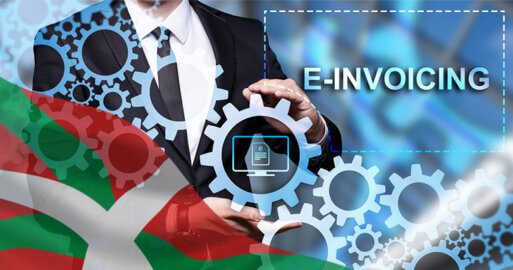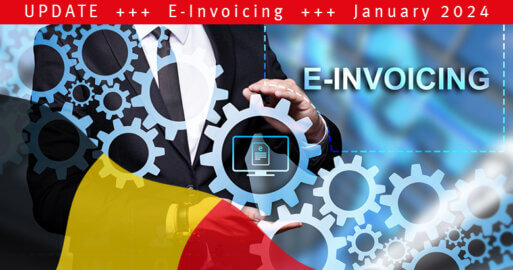Obligatory Slovakian Information System (IS EFA) for exchanging B2G and B2B E-Invoice

On 1 April 2023 the Ministry of Finance of the Slovak Republic, in close cooperation with the Slovak tax authorities, introduced a standardized process to electronically transmit invoices. This involves sending structured electronic invoice data to the Slovak tax administration using an information and communication system for electronic invoices called IS EFA (Informačný system elektronickej fakturácie). The IS EFA e-invoicing system is similar to the existing e-kasa system, which connects all Slovak cash registers to the online portal of the Slovak tax administration. This article looks at what you need to know about this new procedure.
Transmitting electronic invoices to the financial administration significantly helps
- combat tax fraud,
- reduce the tax gap
- collect tax more efficiently
- reduce a company’s administration workload.
Who is legally required to use IS EFA for e-invoicing public authorities?
- VAT-liable, non-resident Slovak companies
- VAT-liable, resident Slovak companies
- Non VAT-liable, resident Slovak companies
When does IS EFA need to be used in Slovakia?
It has been possible to use the IS EFA to generate and send electronic B2G invoices since January 2022. Currently, it’s only mandatory to use the new government e-invoicing system for certain B2G transactions over €5,000.
From 1 April 2023, electronic invoicing to the public administration will be mandatory for all. This mandate was originally planned for 1 January 2023, but has now been postponed by a further three months.
The Slovak finance ministry has also set a further goal for 2024.
It will become mandatory to use the IS EFA for B2B and B2C domestic transactions from 2024. The current date set by the Slovak government is 1 January 2024. It is currently not known whether this will be rolled out in phases or not.
What format will the e-invoicing use?
According to the Slovakian website, e-invoices will need to use either the UBL 2.1 syntax or the CII D16B (EN syntax). At present, there is no obligation to either use a national CIUS or an extension to EN16931. However, a national CIUS may still be introduced at a later date.
What rules does Slovakia have for archiving e-invoices?
Slovakia permits the archiving of electronic invoices in another EU Member State. Invoices must be made available to the tax authorities upon request.
How do you transfer e-invoices to the Slovak IS EFA platform?
The IS EFA information system enables small and medium-sized enterprises (SMEs) to generate, issue and manage domestic electronic invoices through a free online web application. This can also perform automated formal checks of electronic invoices in real time and transmit successfully validated invoices directly to public authorities.
For VAT-registered tax-resident Slovak companies that use their own ERP software to transfer invoice data, IS EFA offers an open API that allows companies to transfer electronic invoices to IS EFA with no further intervention required.
A separate procedure applies to non-resident Slovak companies liable to VAT and non-resident Slovak companies liable to VAT. These companies need to send invoices to the Slovak public administration via a special e-mail address, foreign-invoice@einvoice@mfsr.sk.
The subject and any text in the emails is ignored. Only the data in the attached invoice is read, checked, and manually added to the system. The invoicing party then receives a confirmation or rejection e-mail depending on whether the invoice is accepted.
How do you register to IS EFA?
The electronic invoicing and information system can be accessed at https://web-einvoice-demo.mypaas.vnet.sk/. You need to register in order to be able to use all services. Registration is available in English.
Under the rubric My invoices, you can visualize and view your e-invoices, as well as download a pdf version.

If an invoicing party only sends a small number of invoices, he may wish to use the inbuilt e-invoicing tool to generate an e-invoice. After logging in, the issuer is guided step by step through the process until the invoice is issued.

This new reform means that the Slovak ministry of finance has joined the trend also practised by countries such as Poland, Italy and France in introducing continuous transaction controls (CTC), while also adopting a uniform process for transmitting e-invoices for both the B2G and B2B sectors.
How can SEEBURGER help you with e-invoicing?
With many years’ experience of successfully offering SEEBURGER BIS e-invoicing services, including cloud solutions, we help you to ensure compliance with global and local e-invoicing laws and regulations within Europe and beyond. In addition to our own Peppol access point, we also offer deep process integration with any ERP system to automate the processing of incoming and outgoing invoices. This includes seamless integration with SAP S/4HANA.
Webcast-On-Demand
Discover more about what is changing in e-invoicing in 2023 by watching our Webcast-On-Demand webcast.
DownloadThank you for your message
We appreciate your interest in SEEBURGER
Get in contact with us:
Please enter details about your project in the message section so we can direct your inquiry to the right consultant.
Written by: Andreas Killinger
Andreas Killinger joined SEEBURGER in 2014 and is a product manager, responsible for EDI services and software applications. He specialises in SAP solutions, as well as electronic invoicing (e-invoicing) for globally active customers. Following an apprenticeship as an industrial mechanic and a degree in law and administration, he had various roles in the public sector. He then worked for IBM as an SAP Senior Consultant and SAP Project Manager in international SAP projects from 1999 to 2013.





